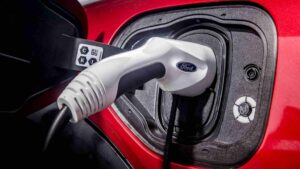FP ExplainersMay 02, 2022 17:20:32 IST
Just a couple of years ago, your average smartphone would typically come with a 5W charging brick and would usually charge your phone from zero per cent battery all the way to 100 per cent in about two or two and a half hours. Fast forward to today, 40-65W fast charging is a very common feature in most phones, and some even go up to 80.
OnePlus 10R & the Realme GT Neo 3 150W edition, support 150W charging, which can completely charge a 5000-ish mAh battery in almost 17 minutes. Now that’s impressive. So how does fast charging work exactly?
Not all phones are created equal
Now, different manufacturers use different fast-charging protocols. iPhones & Pixel phones use USB-PD, whereas most Android phones either use the latest standard from Qualcomm or, as in the case with Realme & OnePlus, use their own proprietary charging protocols. With that being said, most of these protocols function in a similar manner. The difference arises in terms of wattage allowed to pass between the charging brick and the device itself. This is done by using a specific grade of equipment, called controller chips and, by calibrating the charging ports on the device to work at its maximum capacity, only with a selected type of charger. This is also the reason, why a certain fast charger, from let’s say OnePlus, might not work on a phone from some other manufacturer, like Samsung.
A little chemistry
In any given battery, there is a positive terminal and a negative terminal. Most phones use a lithium-ion or a lithium polymer battery. When a battery is powering a device, the lithium ions flow from the negative side to the positive side, through a liquid electrolyte solution. This flow is what powers the device. When there are insufficient lithium ions on the negative side, i.e. the flow becomes weak or stops altogether, the battery runs out of charge.
Charging the battery again makes the ions flow from the positive side, back to the negative side, again, through the liquid electrolyte solution. The wattage of the charger, and the charging protocols, determine the speed with which this flow takes place. The higher the wattage, the faster the flow of the ions at the peak.
Dealing with heat
During the charging process, it is this electrolyte solution that heats up. Sometimes, this heating up of the solution may even cause the battery to explode, especially if it isn’t managed properly. That is why you will see, that as a battery starts reaching its maximum storage while charging, say, 75 per cent or so, the charging speed slows down this is done to reduce the heat output, and extend the battery’s life. Another thing that causes the battery to heat up, is that after a certain number of charging cycles, these ions lose their capacity to hold a positive charge. This means they cannot flow through the solution. This is why, after a few months or years of usage, the capacity of the battery also dips. The more “dead” ions in a battery, the quicker it heats up. This also leads to batteries expanding. Basically, with fast charging, the wear and tear on a device’s battery is also higher.
Expanding batteries
Now, the cells inside a lithium-ion battery will expand a little when it is being charged. This is because of the heat and is a completely normal process. It goes back to its shape when the electrolyte solution cools down, provided, it is not loaded with dead ions. To counter this and to give devices and their batteries a longer life, manufacturers have now started using split batteries. Instead of one huge battery with a capacity of, say, 5000mAh, some manufacturers are using two batteries of 2500mAh each.
Fast charging is a double-edged sword for most manufacturers and users. That is the reason why, most of the research and development around batteries now, is around managing the time taken to charge and ways to optimise battery health. With 240W fast charging on its way, it will be interesting to see how manufacturers improve ways to make batteries last longer, and how to maximise battery health.













